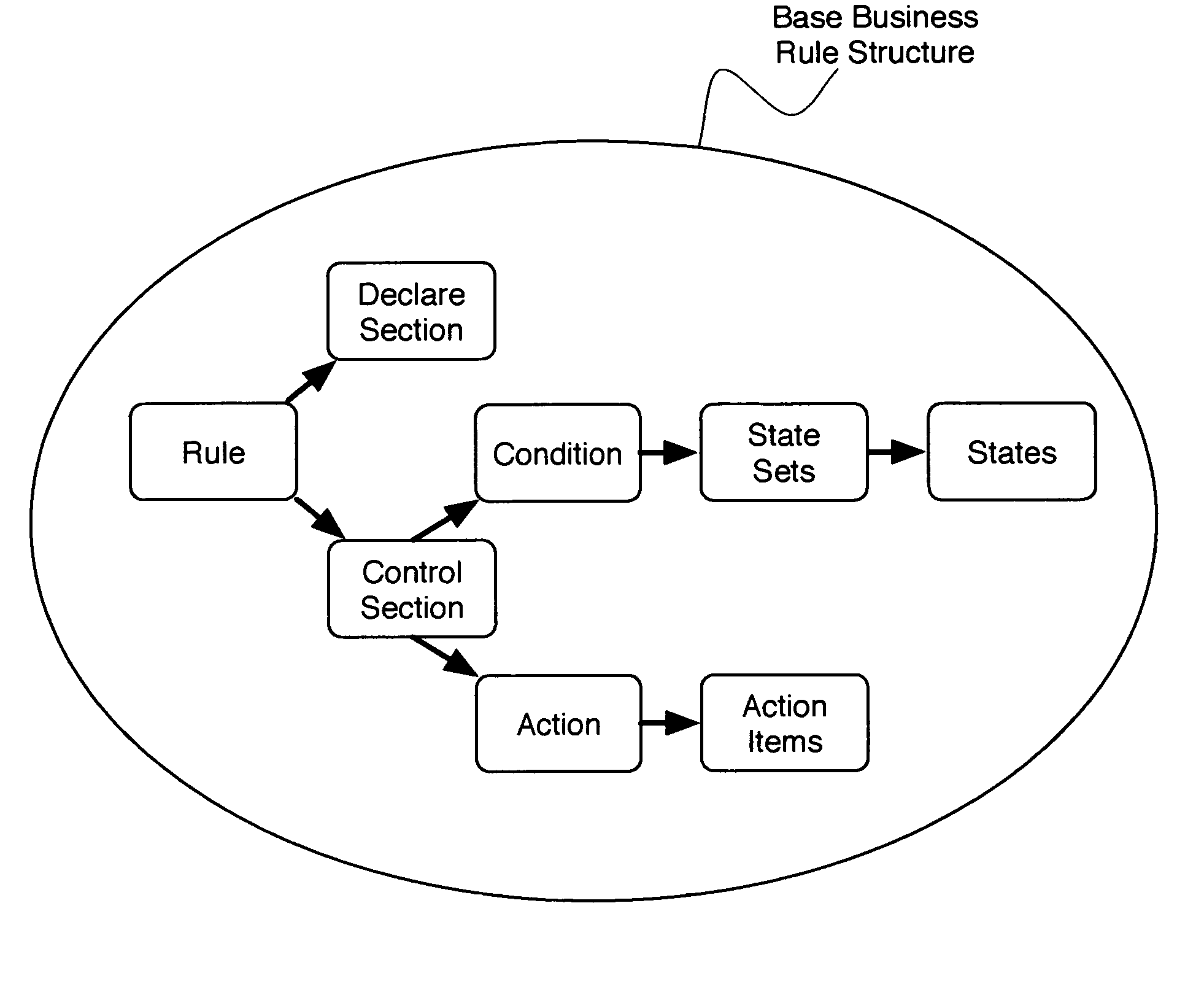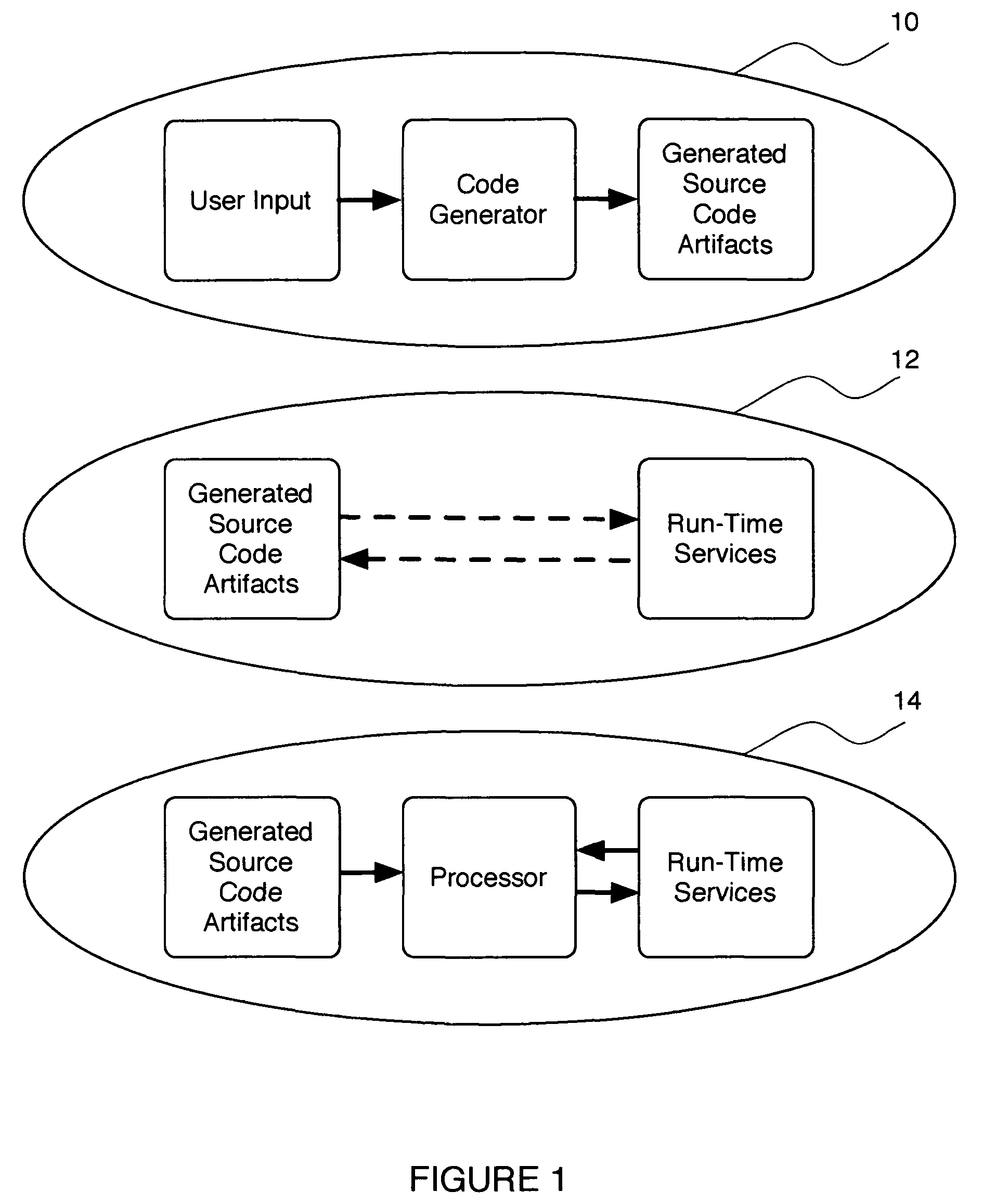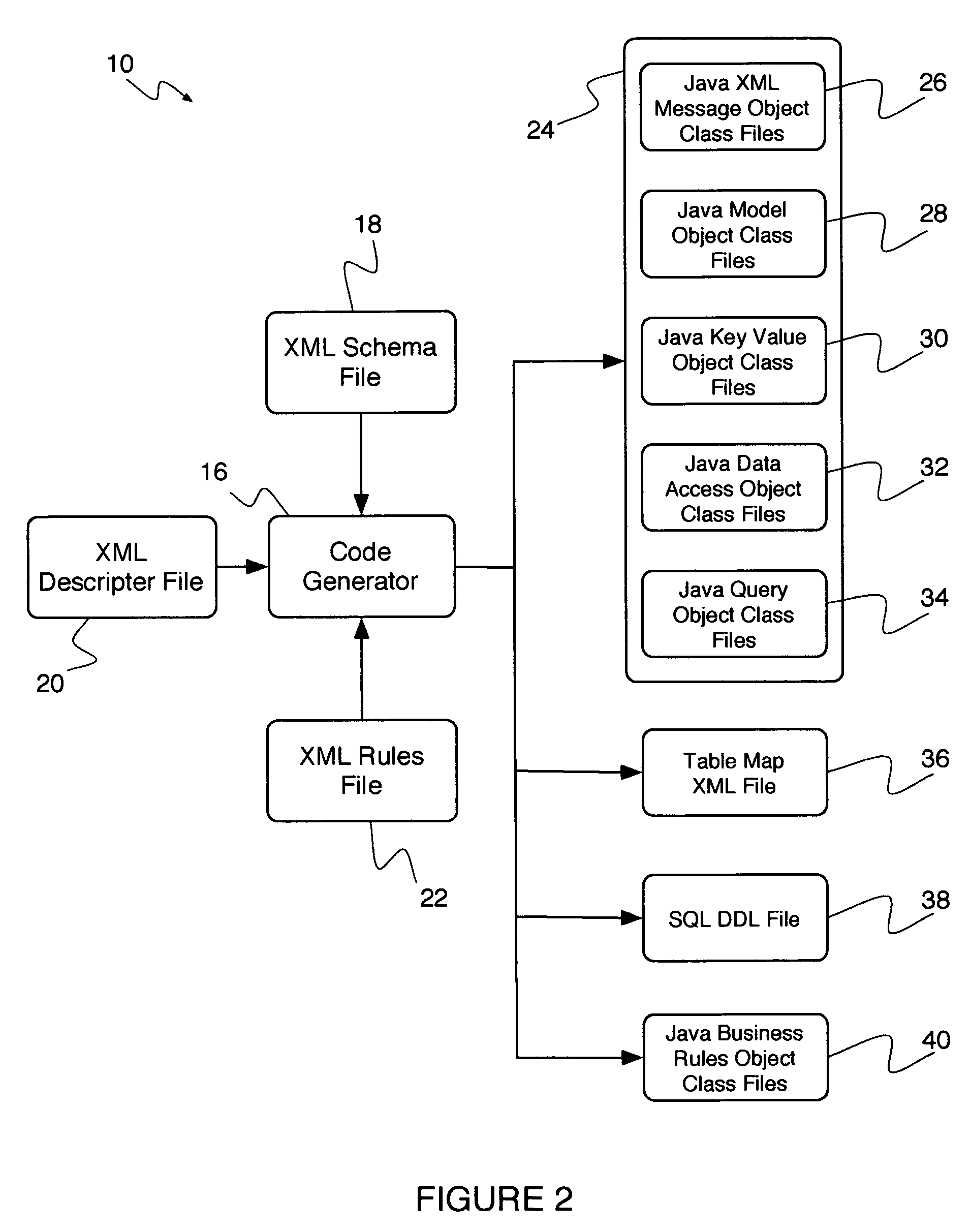System and method for automating the development of web services that incorporate business rules
a technology of business rules and web services, applied in the field of information technology, can solve the problems of reducing requiring a second round of costly re-engineering, and few systems and applications being built from the ground up to meet the principles of soa, so as to reduce or eliminate the disadvantages of a typical soa application, enhance the overall quality of the code and the web service, and control over performance and flexibility
- Summary
- Abstract
- Description
- Claims
- Application Information
AI Technical Summary
Benefits of technology
Problems solved by technology
Method used
Image
Examples
Embodiment Construction
[0015]The following description of the preferred embodiment of the invention is not intended to limit the invention to this preferred embodiment, but rather to enable any person skilled in the art of web services to make and use this invention.
1. OVERVIEW OF THE SYSTEM AND METHOD
[0016]The invention provides a system and method for automating development of web services. Although the system and method have been described with the use of eXtensible Markup Language (“XML”) language and the Java language, the system and method can be used with any suitable markup language and object-oriented programming language. As used in this document, “Java” refers to one or more of the registered JAVA trademarks owned by Sun Microsystems, Inc.
[0017]As shown in FIG. 1, the system and method include a Design Time Framework 10, an object-Service Framework 12, and a Run Time Framework 14. The Design Time Framework 10 functions to accept information models and structures defined in multiple XML schema f...
PUM
 Login to View More
Login to View More Abstract
Description
Claims
Application Information
 Login to View More
Login to View More - R&D
- Intellectual Property
- Life Sciences
- Materials
- Tech Scout
- Unparalleled Data Quality
- Higher Quality Content
- 60% Fewer Hallucinations
Browse by: Latest US Patents, China's latest patents, Technical Efficacy Thesaurus, Application Domain, Technology Topic, Popular Technical Reports.
© 2025 PatSnap. All rights reserved.Legal|Privacy policy|Modern Slavery Act Transparency Statement|Sitemap|About US| Contact US: help@patsnap.com



